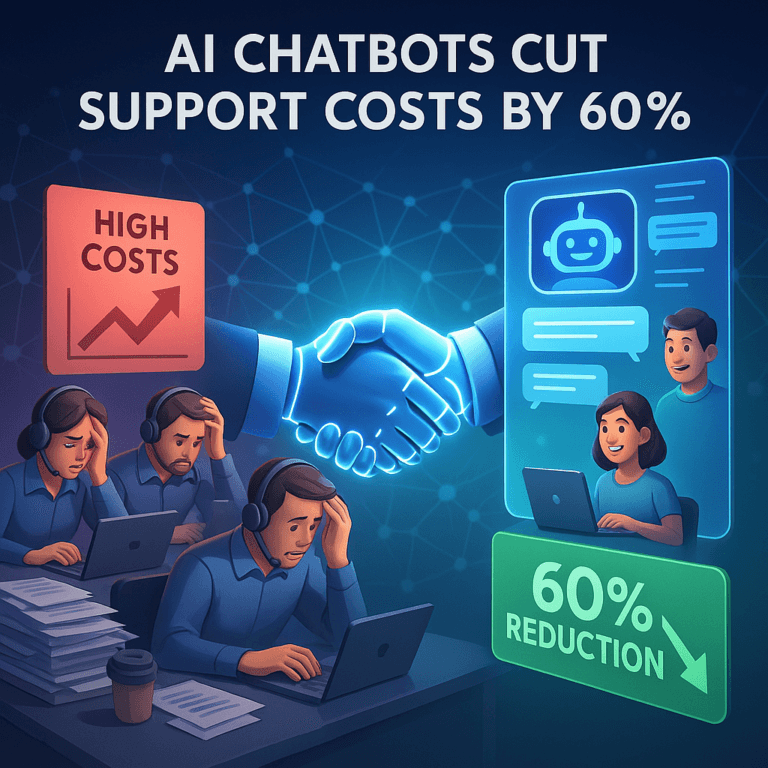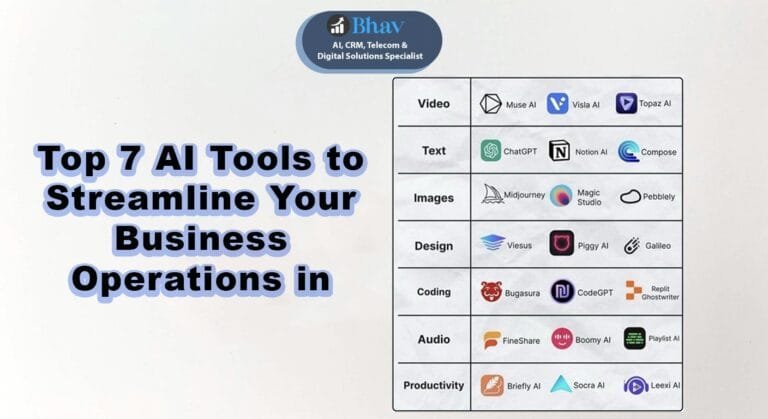
Introduction to AI in Business Automation
Artificial Intelligence (AI) has rapidly evolved to become a pivotal element within business automation. At its core, AI refers to the simulation of human intelligence processes by machines, particularly computer systems. These intelligent systems are designed to perform tasks that typically require human understanding, such as visual perception, speech recognition, decision-making, and language translation. AI encompasses various branches, including machine learning, natural language processing, and computer vision, each contributing uniquely to automating business processes.
In today’s fast-paced business landscape, the integration of AI technologies is gaining significant traction. Companies across diverse industries are increasingly adopting AI-driven solutions to enhance operational efficiency, streamline workflows, and boost productivity. By automating repetitive tasks, AI not only alleviates the burden of manual workloads on employees but also minimizes the margin for error, leading to more accurate outcomes. This shift allows organizations to focus their human resources on higher-value activities that demand critical thinking and creativity.
Furthermore, AI plays a vital role in enhancing decision-making processes. It analyzes vast amounts of data swiftly and efficiently, providing actionable insights that can inform strategic business choices. For instance, predictive analytics powered by AI enables businesses to forecast market trends, assess customer behaviors, and optimize inventory management. As a result, companies are better equipped to react to dynamic market conditions and align their operations accordingly.
As organizations continue to navigate the complexities of the modern marketplace, the relevance of AI in business automation cannot be overstated. Embracing these advanced technologies positions businesses for sustainable growth, allowing them to remain competitive in an increasingly digital world.
Benefits of AI Automation
Artificial Intelligence (AI) automation offers a transformative approach to improving business operations. One of the most significant benefits is increased efficiency. By automating repetitive and mundane tasks, businesses can redirect human resources towards high-value activities that require creativity and strategic thinking. For example, organizations such as Google and Amazon use AI-driven algorithms to optimize their supply chain and manage inventory, leading to notable time savings and resource allocation.
In addition to enhancing efficiency, AI automation results in substantial cost savings. Businesses can reduce overhead costs associated with manual labor and human error. For instance, companies that implement AI-powered chatbots can handle customer inquiries around the clock without additional staffing costs. This not only lowers operational expenses but can also improve service delivery, allowing businesses to serve more customers without incurring higher costs.
Another essential advantage is improved accuracy. AI systems can process large datasets with a level of precision unattainable by human workers. As a result, businesses can minimize errors in tasks such as data entry or financial reporting. A relevant example includes financial institutions leveraging AI algorithms to monitor transactions, identifying fraudulent activities and discrepancies that might otherwise go unnoticed.
Scalability stands out as a crucial benefit of AI automation for businesses looking to grow. AI systems can adapt to increased workloads without necessitating major changes in infrastructure or staffing levels. This flexibility allows organizations to scale their operations efficiently. This adaptability is evident in companies like Salesforce that have integrated AI to enhance their customer relationship management (CRM) systems, ensuring that they can efficiently manage a growing client base.
Lastly, AI automation significantly enhances the customer experience. Personalized recommendations powered by AI allow businesses to cater to individual preferences, fostering customer loyalty and satisfaction. Retailers like Netflix and Spotify use AI-driven recommendations to tailor content to users, demonstrating how AI can cultivate a positive interaction with brands. Overall, the integration of AI into business processes promises numerous benefits that collectively boost productivity and growth.
Key AI Technologies for Business Automation
Artificial intelligence (AI) is transforming the landscape of business automation, enhancing productivity and efficiency. Among the key technologies instrumental in this transformation are machine learning, natural language processing (NLP), robotic process automation (RPA), and chatbots. Each of these technologies offers unique functionalities that can significantly streamline operations.
Machine learning, a subset of AI, involves algorithms that enable systems to learn from and make predictions based on data. For example, e-commerce platforms utilize machine learning to analyze customer behavior, personalizing recommendations and optimizing inventory management. This application not only enhances customer experience but also reduces the time spent on manual analysis, allowing businesses to operate more efficiently.
Natural language processing (NLP) serves as another pivotal technology in business automation, allowing computers to understand, interpret, and generate human language. Companies use NLP to automate customer support through intelligent systems that can respond to inquiries in real-time, analyzing sentiment and context. This results in reduced response times and improved customer satisfaction, as customers receive immediate assistance without the need for human intervention.
Robotic process automation (RPA) further streamlines operations by automating repetitive tasks across various applications. This technology is particularly useful in industries like finance and healthcare, where accurate data entry and compliance are critical. For instance, RPA can automate invoice processing and payroll functions, significantly decreasing the likelihood of errors while freeing up human employees to focus on strategic tasks.
Lastly, chatbots epitomize automation through conversational agents powered by AI. These chatbots engage with customers on websites and social media, providing instant responses to frequently asked questions. This capability not only enhances customer engagement but also reduces the workload on support teams, enabling them to concentrate on more complex inquiries.
Each of these AI technologies plays a crucial role in automating business processes, driving productivity, and ultimately contributing to a more efficient operational framework.
Identifying Areas for Automation in Your Business
Identifying areas within your business that are suitable for automation is a critical step in leveraging artificial intelligence (AI) to enhance productivity. Start by assessing your processes, specifically focusing on those that are repetitive, time-consuming, and susceptible to human error. These characteristics often indicate that the tasks could benefit significantly from AI automation.
Begin by compiling a comprehensive list of your business processes. This documentation should include every task, regardless of its scope or frequency. Once all processes are recorded, categorize them based on their attributes. Determine which tasks require substantial time investments and which involve high volumes of repetitive actions. Identifying bottlenecks in workflows is also crucial, as these can severely hamper efficiency and productivity.
Utilizing mapping tools can prove beneficial in visualizing these processes. Business process mapping allows you to delineate workflows clearly, highlighting redundant steps and potential points of failure. This visual representation aids in straightforward evaluations and facilitates discussions among team members about ways to streamline operations. Employing techniques such as the 5 Whys or Fishbone diagrams can further uncover underlying issues that automation could address.
Prioritization plays an essential role in selecting which processes to automate first. Focus on those that will yield the highest return on investment, either by saving time, reducing operational costs, or enhancing service quality. Engaging your team in this prioritization process can also provide valuable insights, as those working within the processes often have firsthand knowledge of their challenges.
In summary, by methodically identifying suitable processes for AI automation, employing tools for mapping, and prioritizing effectively, businesses can take meaningful steps toward improving efficiency and productivity through artificial intelligence.
Implementing AI Solutions: Best Practices
Implementing AI solutions in a business setting requires careful planning and execution to maximize effectiveness and minimize disruption. The initial step involves setting clear, measurable goals aligned with the organization’s overall strategy. These goals serve as a foundation for assessment, allowing businesses to evaluate the success of their AI initiatives. It is essential to identify specific areas where AI can enhance efficiency, whether through automating routine tasks or providing actionable insights from vast data sets.
Choosing the right technology is another critical consideration. Organizations should conduct a thorough analysis of available AI tools and platforms to ensure they select solutions that best fit their operational requirements. This choice may involve evaluating the scalability, compatibility, and user-friendliness of AI technologies. Moreover, integrating AI with existing systems is a vital step; businesses must ensure that the new AI applications can seamlessly connect with current workflows and data architectures, reducing potential friction during adoption.
Change management plays a fundamental role in the successful implementation of AI solutions. It is crucial to prepare employees for adopting new technologies, which may involve comprehensive training programs and open communication strategies to address concerns, misconceptions, and expectations. Engaging employees early in the process fosters a culture of innovation and collaboration, making them more receptive to the changes that AI introduces. Additionally, establishing a dedicated team with the right skill sets, including data scientists, engineers, and domain experts, enhances the implementation process and encourages a shared understanding of AI objectives. By adhering to these best practices, businesses can effectively transition to AI-powered operations while boosting productivity and maintaining a competitive edge in their industries.
Measuring the Impact of AI Automation
To effectively assess the advantages of AI automation within an organization, it is crucial to establish clear metrics and key performance indicators (KPIs). These KPIs should focus on components such as productivity, efficiency, cost reduction, and overall return on investment (ROI). By quantifying these attributes, businesses can gain insights into the tangible benefits of their AI initiatives, allowing for informed decision-making regarding future investments in technology.
Some commonly utilized KPIs include the time taken to complete tasks, the volume of outputs produced, error rates, and customer satisfaction scores. For instance, a company may track how much time has been saved in a specific process since implementing AI solutions. Additionally, sales teams can benefit from monitoring lead conversion ratios before and after AI implementation, which can lead to improved revenue generation. By comparing these metrics pre- and post-AI implementation, organizations can evaluate the direct impact on their operations.
Moreover, the selection of appropriate tools for measurement plays an integral role in this process. Organizations can utilize analytics platforms that provide real-time insights into various operational aspects. These tools aggregate data from different sources, offering a comprehensive view of performance trends over time. Leveraging dashboards and reporting systems can facilitate deeper analysis and foster a proactive approach when it comes to AI strategies.
Real-life case studies further exemplify the effectiveness of tracking AI automation’s impact. Various corporations have documented significant improvements in efficiency through strategic AI deployment. By showcasing these successes, companies are able to set benchmarks and aspirations for their AI efforts, demonstrating the inherent value of thorough measuring and analysis. Ultimately, effectively measuring the impact of AI leads to enhanced productivity, informed strategies, and sustainable growth.
Challenges and Considerations of AI Automation
As businesses lean towards artificial intelligence (AI) to automate processes and enhance productivity, they must also confront several challenges that accompany this transition. One primary concern is data privacy. Organizations must ensure that the data utilized for training AI systems complies with legal regulations and protects customer information. Implementing robust data governance practices is crucial to mitigate risks associated with unauthorized data access or breaches.
Another aspect requiring attention is the need for employee training. Transitioning to AI automation might lead to job displacement fears, causing anxiety among staff. It is imperative to invest in training programs that not only upskill employees but also facilitate a seamless integration of AI tools into existing workflows. By fostering a culture of continuous learning, businesses can alleviate concerns and encourage staff to embrace the changes brought by AI.
Resistance to change is an inevitable hurdle when adopting AI automation. Employees accustomed to traditional methods may be hesitant to adapt to new technologies. To overcome this challenge, management should communicate the benefits of AI clearly, highlighting how it can augment rather than replace human roles. Engaging employees in the automation strategy can help foster acceptance and enthusiasm for the changes ahead.
Initial costs associated with AI implementation can be significant, which presents another challenge for organizations. It is essential for businesses to conduct a thorough cost-benefit analysis before proceeding, ensuring that potential long-term productivity gains justify the initial investment. Additionally, ongoing maintenance and support requirements for AI systems should not be overlooked. Allocating resources for regular updates and troubleshooting is vital to maintaining optimal performance.
In light of these challenges, adopting a proactive approach that emphasizes training, communication, and strategic planning will help businesses navigate the AI automation landscape more effectively. By preparing for potential obstacles, organizations can enhance their transition to AI-driven processes and secure a competitive advantage in their respective industries.
Future Trends in AI and Business Automation
The landscape of artificial intelligence (AI) is evolving rapidly, and its integration into business automation heralds a new era of operational efficiency and productivity. One of the most significant anticipated trends is the advancement of AI capabilities, where algorithms become increasingly sophisticated. Machine learning and deep learning are expected to elevate the ability of AI systems to process vast amounts of data, recognize patterns, and make predictions with remarkable accuracy. Companies that harness these advancements can expect to streamline their processes, reduce operational costs, and improve customer experiences.
Moreover, as organizations grapple with the implications of AI, the importance of ethical AI is becoming increasingly pronounced. To build trust and mitigate risks, businesses must prioritize ethical considerations by ensuring fairness, transparency, and accountability in their AI systems. This focus on ethical practices will not only comply with emerging regulations but will also foster customer loyalty and marketability, positioning firms as responsible innovators in their industries.
Another crucial trend is the growing role of AI in decision-making processes. With the integration of advanced analytics, AI systems can provide valuable insights that drive strategic decisions. Organizations harnessing AI for predictive analytics can better anticipate market trends, customer preferences, and operational bottlenecks, thereby staying ahead of the competition. The ability to leverage data intelligently enhances business agility, allowing firms to adapt swiftly to changing environments.
To remain competitive, businesses must proactively embrace these trends. This involves investing in AI technologies, upskilling employees, and fostering a culture of innovation that encourages experimentation with automation tools. A forward-thinking approach will enable enterprises to not only keep pace with technological advancements but also redefine their operational frameworks for sustainable growth.
Conclusion: Embracing AI for Business Success
As businesses navigate the complexities of the modern marketplace, the role of Artificial Intelligence (AI) in automating processes and enhancing productivity becomes increasingly significant. Throughout this discussion, we have highlighted how strategic implementation of AI can streamline operations, minimize human error, and allocate resources more effectively. By embracing AI technologies, organizations can not only optimize their workflows but also gain a competitive advantage in their respective industries.
One of the critical takeaways is that AI serves not merely as a tool but as a transformational element that can reshape business paradigms. Whether it is through automating repetitive tasks, improving customer interactions with intelligent chatbots, or leveraging data analytics for informed decision-making, AI holds the potential to revolutionize various aspects of business operations. The integration of AI into workflows is not just an operational upgrade; it is a fundamental shift in how businesses can harness data to not only survive but thrive in an ever-evolving landscape.
Moreover, businesses considering the implementation of AI should adopt a thoughtful approach that aligns technological investments with their strategic goals. This involves not only choosing the right AI solutions but also ensuring a culture that welcomes innovation and encourages continuous learning. Training staff to work collaboratively with AI tools can amplify the benefits, making AI an integral part of everyday business practices.
In summary, the global shift towards AI is not a passing trend. It is a powerful wave of change that, if embraced, can lead to unprecedented growth and efficiency. Companies that proactively incorporate AI into their business strategies will find themselves better equipped to tackle challenges and seize opportunities, fostering sustainable success in the long run.



